Directing Classes – Casting, Directing Actors + Directorial Approaches
Final Year Project ResearchDirecting Classes – Main Takeaways
I attended the directing classes led by Paul and generally found them helpful in exploring new directing approaches and techniques, going into detail about the director’s workflow, and answering any queries I had.
Below are my notes from the two classes I attended this semester.
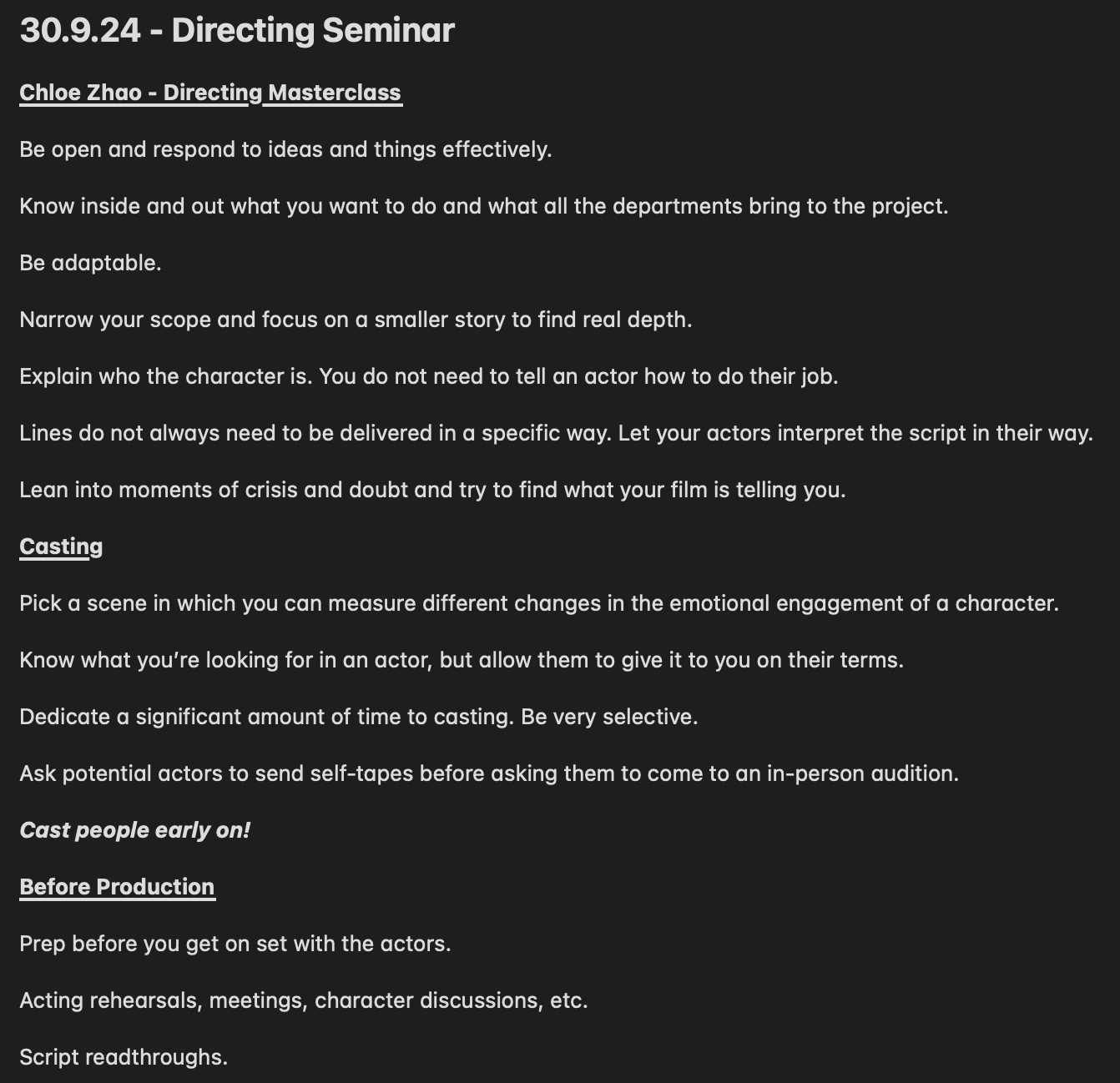
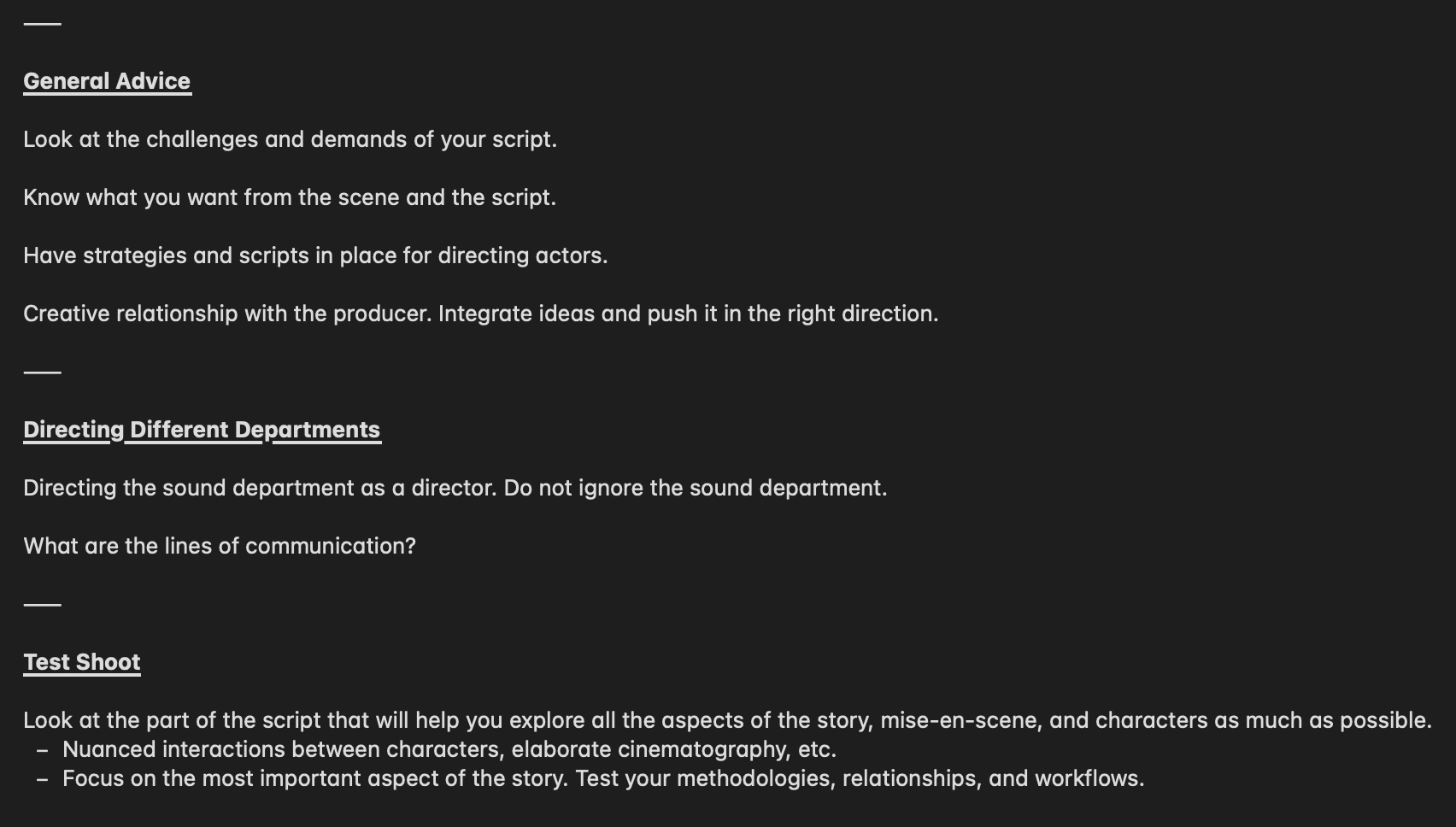
Through the case study interview with Chloe Zhao, my main takeaway from her was to lean into, and not away from, moments of crisis and doubt and decipher what they’re trying to tell you about your film. This completely shifted my perspective on challenges and obstacles arising, not something to avoid or overcome as quickly as possible but an opportunity to understand your film in greater depth.
We also discussed the casting process, which has always excited and terrified me. Paul recommended that we select scenes for actors to perform that show a full spectrum of emotional engagement in the character. This informed the section of the script from Affliction I chose for our test shoot, as it presented heightened and nuanced emotions within our main characters.
Our next class was more of a student-led session where we could ask questions and discuss aspects of the role of a director. Below are my notes from that session.
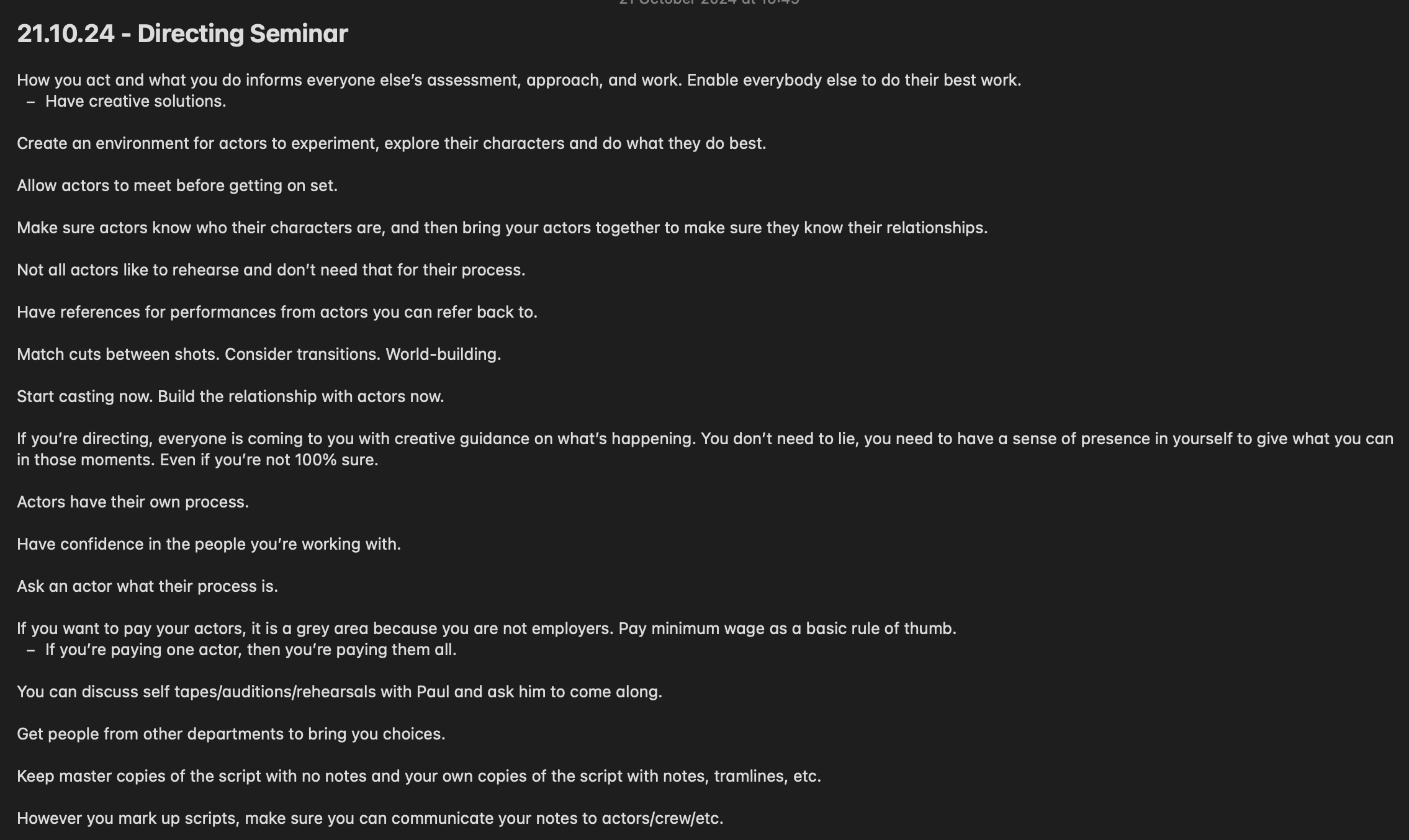

I found it super beneficial to have a session to discuss everything directing and ask Paul for his advice or input towards our directorial approaches and projects.
I appreciated the reminders about how each actor has their own process and works differently (like crew!) and asking each actor how they prefer to work with a director and other actors. Another key takeaway was to ask HODs from different departments to bring you options so you can focus on making the right decision and not have to come up with each option – which would inevitably lead to decision fatigue.
Short Film Viewings
While it was easy to get caught up in Affliction and hyper-focus on the specifics of our project, I found it helpful to take a step back and watch other short films to learn more about the format and how to do it successfully (or not). Over the semester, we were assigned a variety of short films, each successful in its own way and offering lots of learning opportunities.
Below are some of my notes from those sessions.
Ambiguity and Subtext
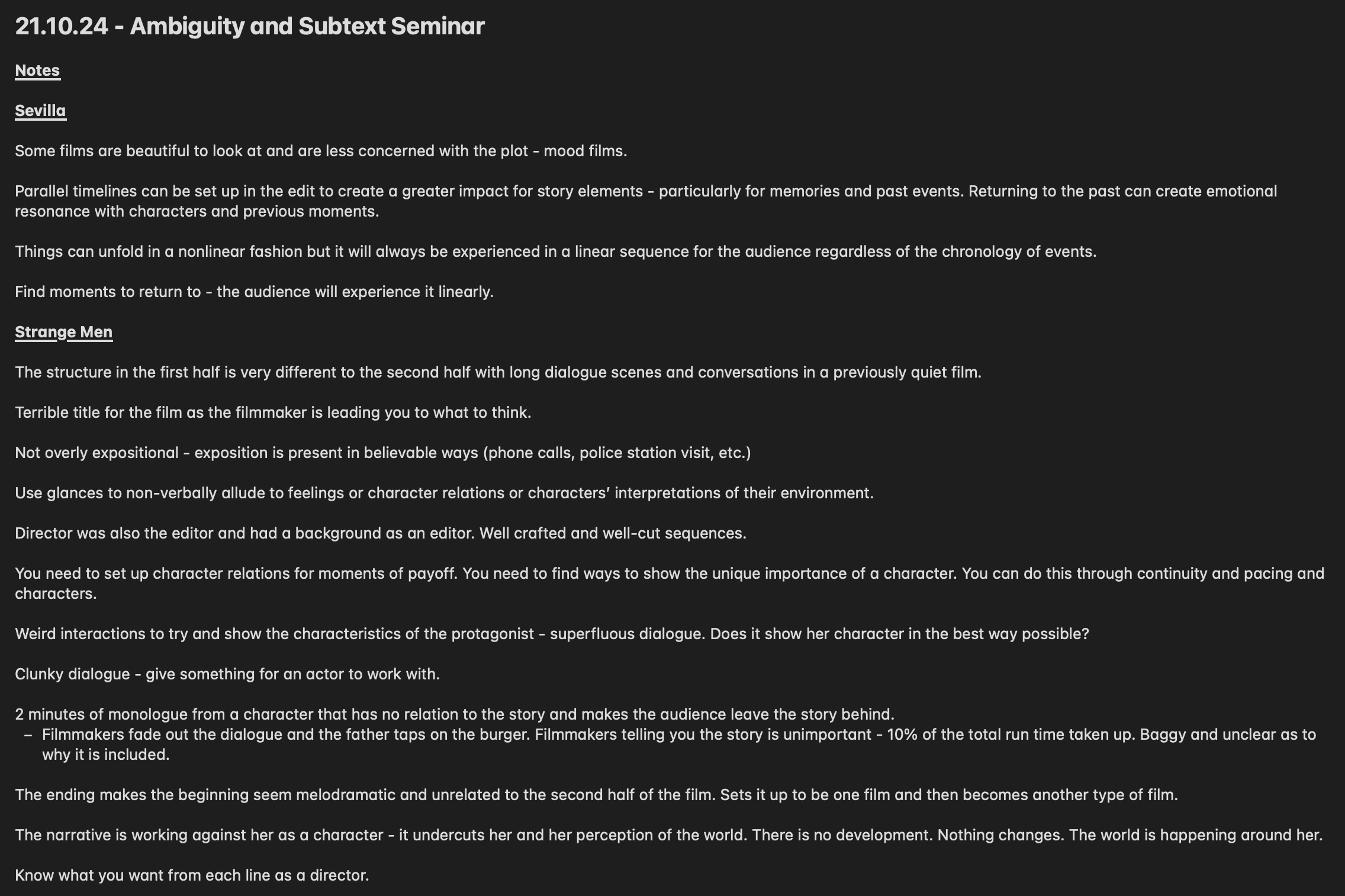

Favourite Short – Night Swim. Excellent character study and set-up of the character dynamics in the film’s first minute. Characterisation and motivations are established through dialogue subtext.
Duration + Passage of Time
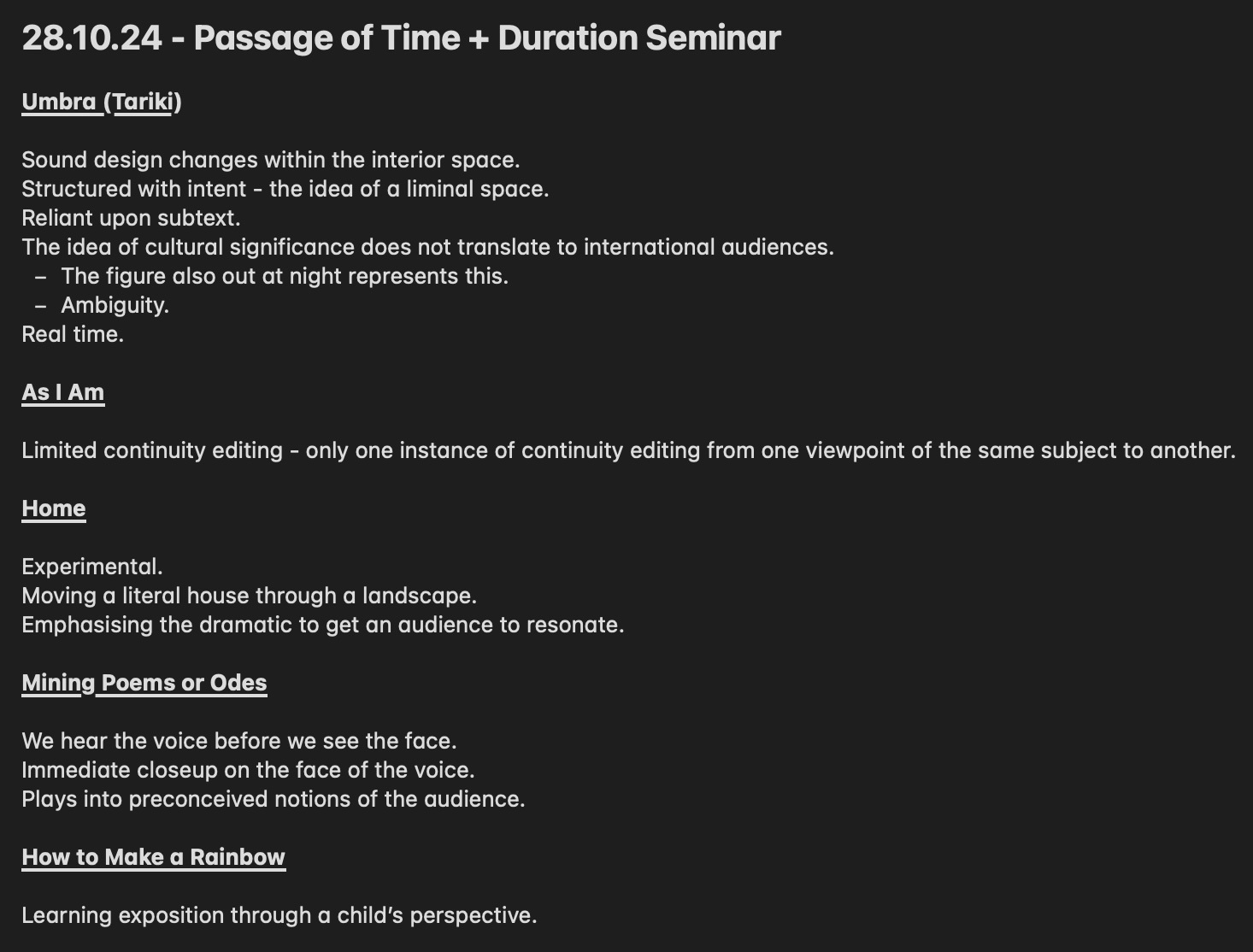
Favourite Short – How to Make a Rainbow. It had an interesting and unique approach to exposition as we learn more about characters and worldbuilding through a child’s perspective. We learn exposition as the main character does, and because of that, it’s immersive.
Character Flaws
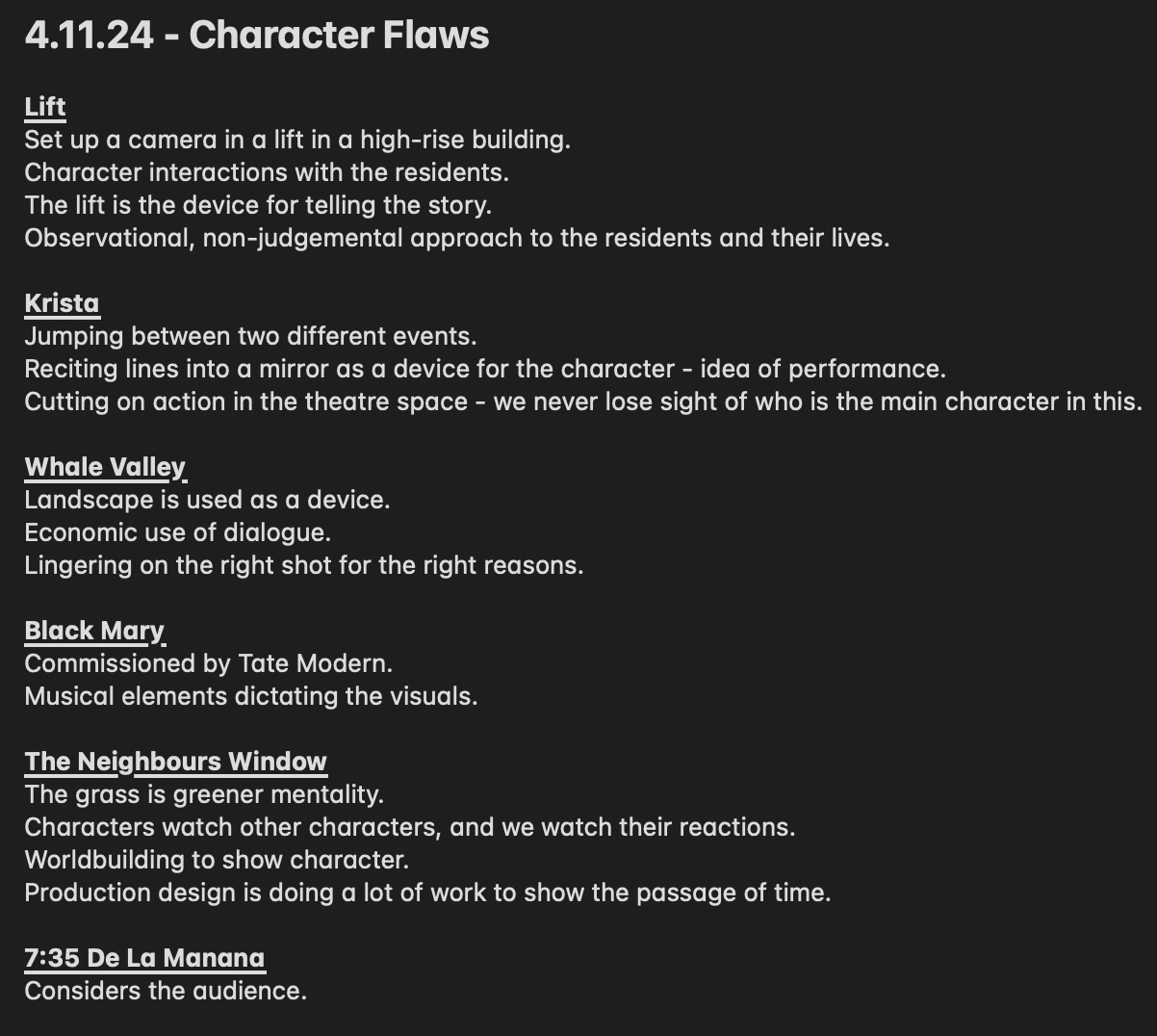
Favourite Short – Lift. What resonated with me the most was the non-judgmental approach to the film and how that cultivated deeply intimate connections with the high-rise building residents. Approaching narrative filmmaking with this non-judgemental, observational approach would allow more interesting characters and stories to unfold.
Areas of Improvement & New Techniques
Try out some of the directing techniques suggested by Chloe Zhao – lean into the doubt/uncertainty and what it can teach us!
Treat the casting process as a way to explore characters through actors’ interpretations.
Take my learnings from the short film screenings and apply them to Affliction.